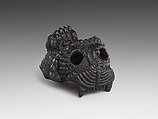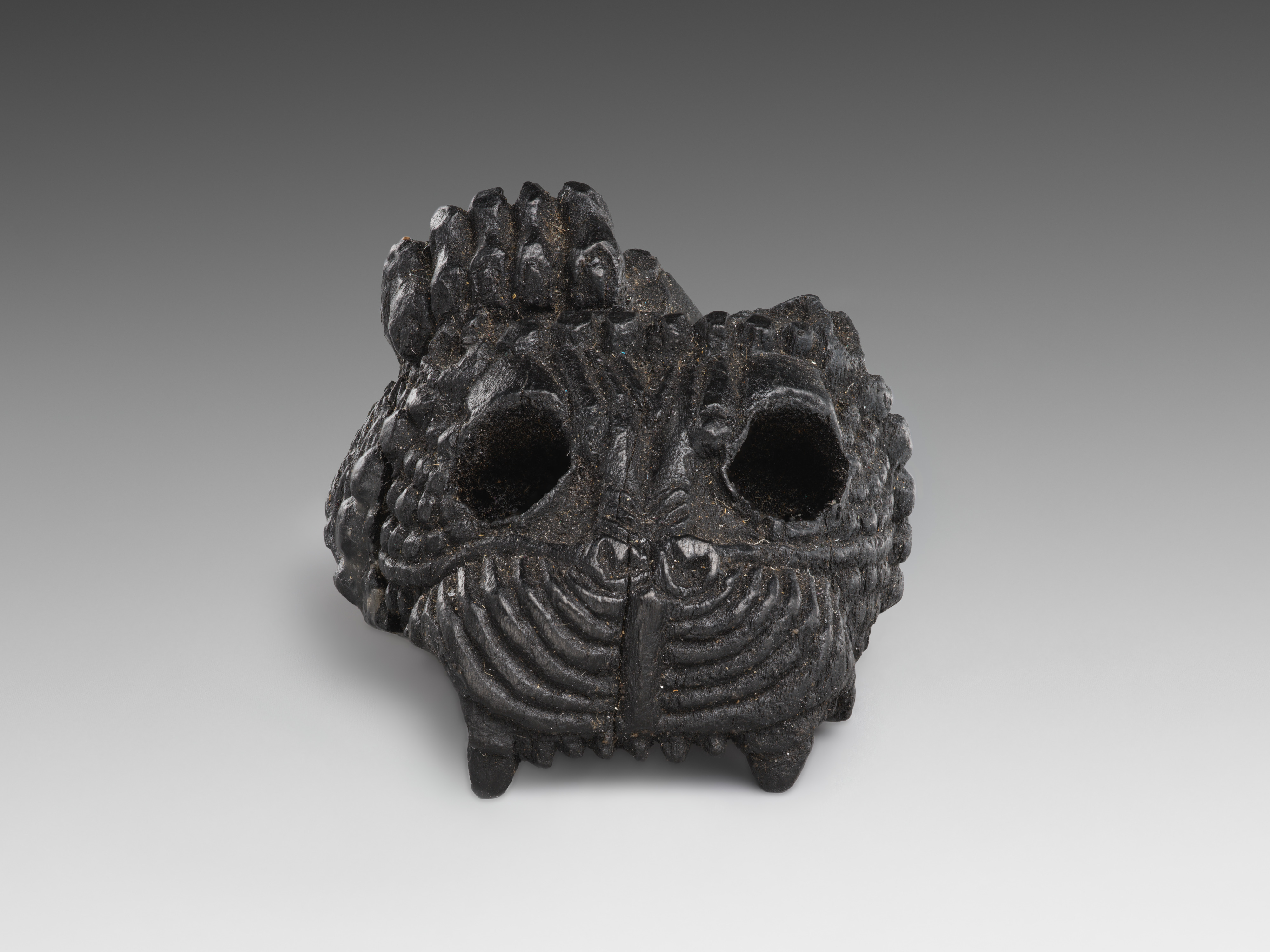Upper part of a lion's head
Not on view
This wood fragment preserves the upper part of a lion’s head. On the top of its head are what may be interpreted as the toes of a human right foot. The lion is open-mouthed with bared fangs. Its features are carved in a stylized manner and its eyes would have once held inlays. This fragment may have once been part of a larger piece of furniture. It is one of the thousands of artifacts of terracotta, bronze, iron, gold, silver, and ivory which were recovered from monumental buildings at the site of Hasanlu in northwestern Iran. Hasanlu is best known for its early first-millennium B.C. occupation. At that time, it was a major local center of commerce and artistic production with close ties to other political and creative centers of the Near East. In 1957, the University Museum of the University of Pennsylvania initiated large-scale excavations at the site with the Iranian Archaeological Service. The Metropolitan Museum of Art co-sponsored the excavations from 1959 to 1977 and received a share of the finds. Many of these objects are now on display in the Museum. Hasanlu was settled from the sixth millennium B.C. through the Achaemenid Persian period of the fifth and fourth centuries B.C., as well as later in the thirteenth and fourteenth centuries. Excavations included both stratigraphic soundings and horizontal clearance of the early first-millennium B.C. levels, when the settlement included a fortified citadel and a surrounding lower town and cemeteries. A violent attack and subsequent fire destroyed Hasanlu at the end of the ninth century B.C. and the resulting collapse of buildings buried not only numerous artifacts but also many of the inhabitants.
Due to rights restrictions, this image cannot be enlarged, viewed at full screen, or downloaded.
This artwork is meant to be viewed from right to left. Scroll left to view more.



